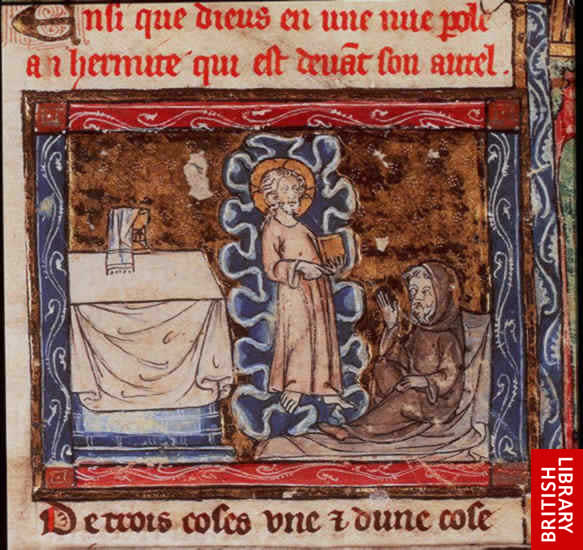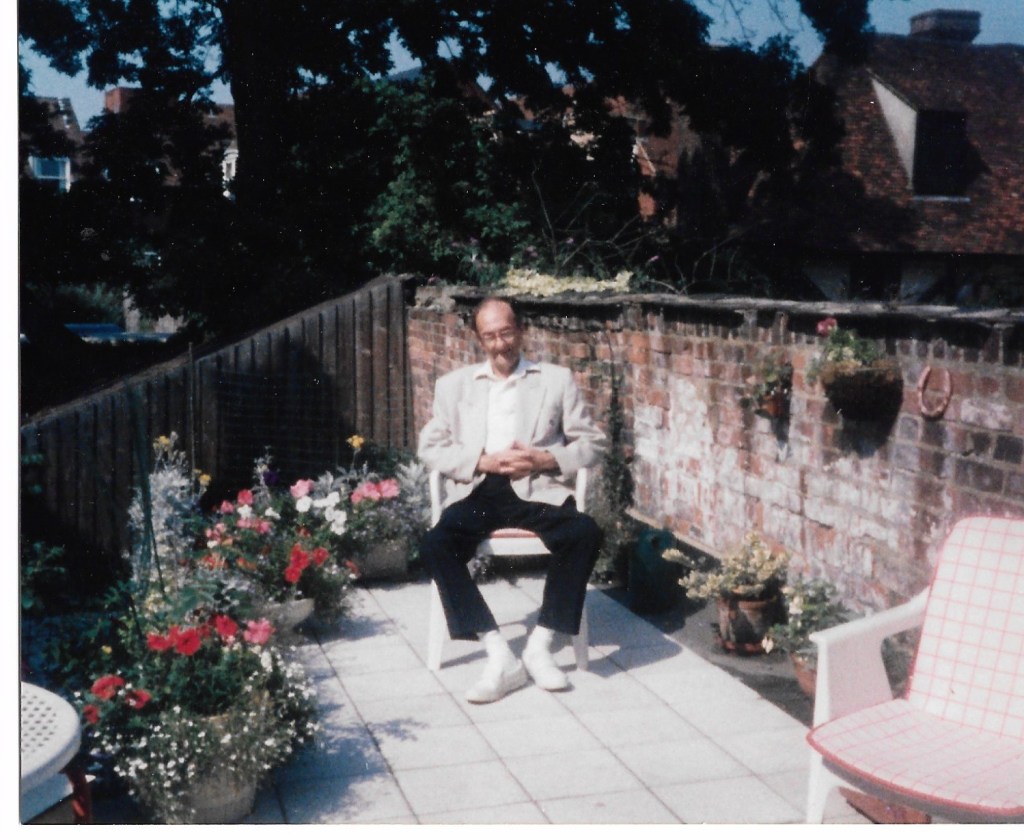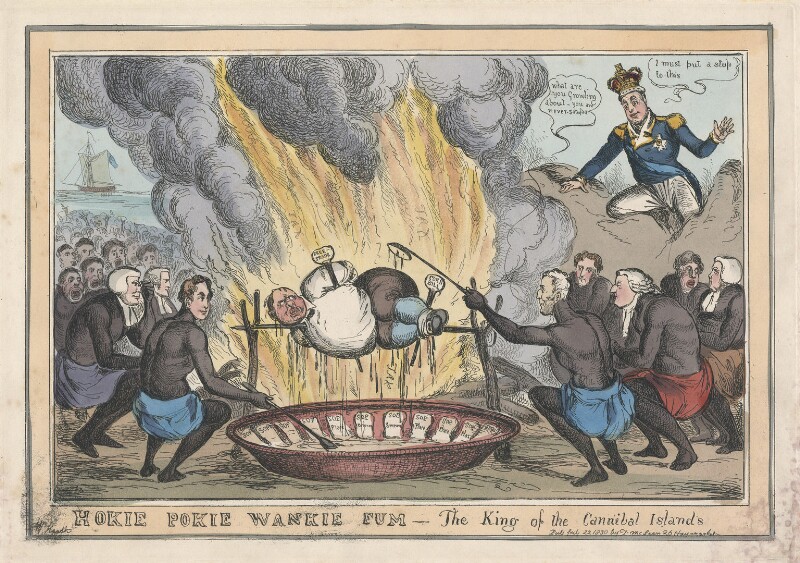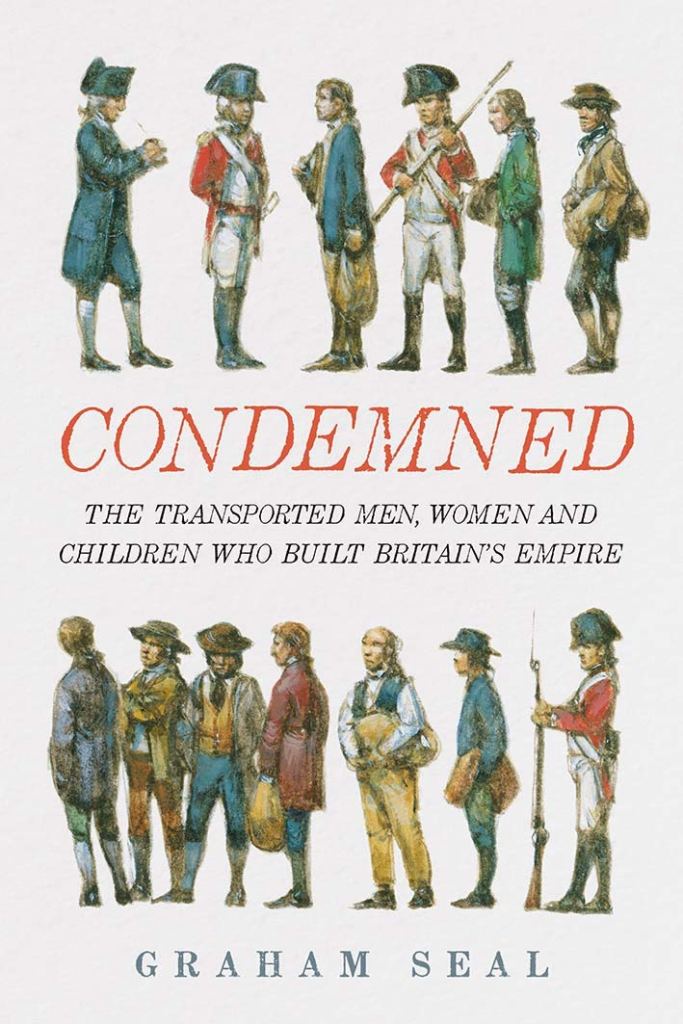Christ appears to a hermit in a vision, holding a book containing the true history of the Holy Grail. From History of the Holy Grail, French manuscript, early 14th century
Copyright © The British Library Board
There’s a lot of them about, Holy Grails, that is. But one in Spain has an intriguing tale to tell.
The venerable Christian relic known as the Cup of Christ, the Lord’s Chalice and, most evocatively, ‘The Holy Grail’ is the centre of a twisting tale of history and myth. Every facet of its corporeality – shape, colour, size – is uncertain, as is its origins. It is said, variously, to have been the cup or plate used by Jesus Christ at the Last Supper; to have been the bowl used to collect Christ’s blood as he died on the Cross, or both. Then again, it might just be a symbol encoding the mysteries and meanings of the Holy Communion.
We first hear of this relic in medieval Europe where it appears in a number of romances from around the twelfth and thirteenth centuries. This is also the context in which we first hear of the involvement of the Knights Templar in the guardianship of the Grail, a notion that has fed a fecund flow of often farcical fiction right up to the present day. By the fifteenth century it melded into the Celtic Arthurian legends then very much in vogue at court and wherever people could afford books and were able to read them, or have them read aloud. Thomas Mallory’s Le Morte d’Arthur (1485) is the main vehicle for this transformation. In all these variations of the tale, the Grail is located not in the Middle East but in Europe.
How the Grail actually got from its original location in Jerusalem to Europe is a similarly slippery story. One version is that it was brought by the disciple, Peter, when he went there to bring the gospel to the west. This one, not surprisingly, seems to have at least the tacit approval of the Roman Catholic church given Peter’s significance in its founding.
Another, more folkloric tradition, concerns Joseph of Arimathea, the man who is said to have taken responsibility for the transmission of the dead Jesus to the disciples who interred him in Joseph’s garden in a man-made cave. In this version, of which there are several variants, the Grail is usually said to have been a wooden cup taken to England by Joseph, or his followers, where a Christian institution was founded at Glastonbury. This strand of the legend, which may only date from the late nineteenth century[1] also continues to have potency in the modern era as a variety of people seeking spiritual awareness and confirmation, as well as Christians, actively venerate the Glastonbury area, with its intriguing pre-Christian resonances of standing stones and paganism in general.
None of these stories have any credible historical evidence to support them. Like the obsession of the Nazis with aspects of the Cathar version of the legend,[2] they are purely the blended outcomes of belief and fictioneering, producing a potent and enduring myth.
But, relatively recently, another unexpected strand has been added to the rich narrative of the Holy Grail. In 2006 and 2010, a number of early Islamic manuscripts were said to have been discovered in Egypt and translated. They provide potentially verifiable evidence of the history of one particular object identified as the Holy Grail by Islamic sources as early as 400CE. According to Margarita Torres Sevilla and José Miguel Ortega Del Río, the academic authors of Kings of the Grail, an object long identified as the Holy Grail in its place of imputed was kept in Jerusalem for the first thousand years or so of its existence. There, it was visited and venerated by pilgrim Christians for centuries.
Jerusalem was under Muslim control at this point and around 1053-54 a Caliph took the Grail and gifted it to a Muslim ruler in Spain. This man wished to develop good diplomatic relations with the Christian Ferdinand 1 of León and decided to send the object to him. By then the object, described as a stone cup, was said to have medicinal powers. The great Muslim leader, Saladin ((Salah-ad-din), would later play a part in this version of the Grail story, using a ‘fine shard’ previously struck from the object to cure his daughter’s illness. The authors of the book use these documents and other evidence to trace the journey of the Grail to where, they argue, is its current resting place, the Basilica of San Isadoro in León.[3]
So, we now have a new and, it seems, authoritative historical identification of the resting place of the Holy Grail. Not Dan Brown’s Rosslyn Chapel in Scotland; not Rennes-le-Château in Cathar country; and not in the glowing mysteries of the Arthurian romances. It’s in Spain.
Whatever we might think of this argument, remembering that it is made by academics from the region, it seems that this line of Grail legend has some serious historical cred. Far more than any of the many other Grails around the world, including several in Britain and Ireland, some in Italy, one in Vienna, and another in America, among others.
Why does it all matter? For Christians, the answer is obvious. The Grail is a relic as closely associated with the body and death of Jesus Christ as possible. It’s up there with the True Cross, the reed used to give him water and the sponge used to cruelly whet his lips with vinegar as he died. As the authors of Kings of the Grail show, these relics were exhibited in the Temple together with their version of the Grail for centuries.
Interestingly, the Grail does not seem to have been accorded any more significance in this period than the other sacred items, until around the time that it was sent off to Europe for some diplomatic ingratiation. It may be that we owe the evolution of the Holy Grail into Christendom’s most sacred relic to the power politics of the Muslim world as much as the romancing of medieval European troubadours and writers.
[1] S. Baring-Gould, A Book of The West: Being an Introduction to Devon and Cornwall (2 Volumes, Methuen 1899; A Book of Cornwall, Second Edition 1902, New Edition, 1906.
A W Smith, “‘And Did Those Feet…?’: The ‘Legend’ of Christ’s Visit to Britain” Folklore 100.1 (1989), pp. 63–83.
[2] Umberto Eco, The Book of Legendary Lands, Maclehose, 2013. Chapter 8 ‘The Migrations of the Grail’ on Otto Rahn’s Nazi fantastications and also good on other aspects of Grail legendry. See also chapter 14 on the modern crypto-historical invention of The Priory of Syon and the alleged bloodline of Jesus Christ and Mary Magdalene, as popularised in The Holy Blood and the Holy Grail.
[3] Margarita Torres Sevilla and José Miguel Ortega Del Río, Kings of the Grail: Tracing the Historical Journey of the Cup of Christ to Modern-Day Spain, The Overlook Press, New York, 2015. Translated from the Spanish edition of 2014 by Rosie Marteau.












